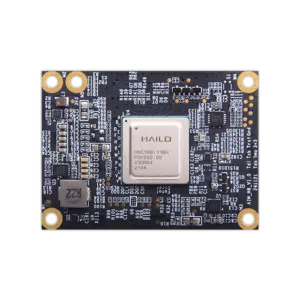Seamless AI Integration with Geniatech's M.2 and B2B AI Accelerator Options
Seamless AI Integration with Geniatech's M.2 and B2B AI Accelerator Options
Blog Article
Seamless AI Integration with Geniatech's M.2 and B2B AI Accelerator Options
Synthetic intelligence (AI) is developing at a speed that challenges industries to adopt more efficient and strong solutions. On the list of cornerstones with this improvement are AI ai module made to handle complicated serious understanding tasks without consuming excessive power. High-performance, low-power AI accelerators are paving the way in which for better technologies to infiltrate diverse industries, from healthcare and financing to automotive and side computing.

The Dependence on High-Performance, Low-Power AI Alternatives
Heavy understanding versions are more powerful than actually, but in addition they need significant computational resources. Instruction and working these models involve equipment that can process immense levels of knowledge efficiently. Nevertheless, main-stream processors often flunk in conference the energy effectiveness and rate required for real-time AI applications. That gap has led to a spike in need for AI accelerators that assure good performance while being energy-conscious.
For industries relying on effective AI implementation, these accelerators signify a critical solution. Devices and systems featuring these components may supply quick ideas without wearing energy reserves, permitting seamless integration into resource-constrained environments. This shift toward handling computational energy with power efficiency is driving deeper adoption across cloud, on-premises, and edge processing infrastructures.
Key Functions That Establish Modern AI Accelerators
Power Effectiveness Without Compromising Power
Low-power consumption is a trait that sets these accelerators apart. They allow methods to operate for longer intervals, especially in cellular or edge programs where energy assets are limited. By optimizing power utilization, these accelerators aren't only eco-friendly but in addition cost-effective for businesses.
Improved for AI Workloads
Unlike old-fashioned processors, AI accelerators are designed to generally meet the precise needs of heavy understanding workloads. This includes tasks like subject detection, language handling, and real-time analytics. A number of these accelerators feature highly parallel architectures, which allow simultaneous control of data to execute projects quicker and with larger precision.
Scalability for Any Implementation
Scalability is another standout function of those solutions. Whether you're deploying AI types in significant information stores or establishing them in to compact side products, these accelerators are made to manage varying computational needs without limiting efficiency.
Compact Designs for Varied Applications
Advancements in processor style have made AI accelerators compact without diminishing their power. This opens pathways for integration into units across sectors like healthcare (wearable devices), retail (smart kiosks), and automotive (self-driving vehicles). That versatility pushes use across industries.
Real-World Programs Driving Adoption
Healthcare
From diagnosing conditions to handling patient data, AI in healthcare involves strong computational power. AI accelerators support real-time information analysis, permitting quicker and more accurate diagnostics while conserving system energy.
Finance
Examining purchase knowledge and finding anomalies for fraud detection is computationally intensive. AI accelerators encourage economic institutions to perform serious understanding versions quicker, increasing the pace and accuracy of the protection systems.
Smart Towns

For intelligent cities deploying AI for detective, traffic management, and energy conservation, AI accelerators give the required energy and efficiency. Their power to use on edge devices guarantees real-time information control for improved urban management.
Autonomous Vehicles
Self-driving technology could very well be one of the very most challenging programs of deep learning. AI accelerators supply the computational horsepower needed to process data from cameras and devices in real-time, ensuring vehicles produce safe and reasonable decisions.
The Base Range
The shift toward high-performance, low-power answers symbolizes the future of heavy understanding advancements. These accelerators enable industries to drive the boundaries of AI integration while ensuring energy effectiveness and functional scalability. Their usefulness across sectors underscores their affect as both enablers of better systems and individuals of cost-effective solutions.
By meeting the needs of real-time analytics and side processing, these accelerators are adjusting the AI landscape, making it a reachable, sustainable, and transformational technology for industries throughout the globe. If your concentration is on successful AI arrangement, low-power AI accelerators are an important element in that constant innovation revolution. Report this page